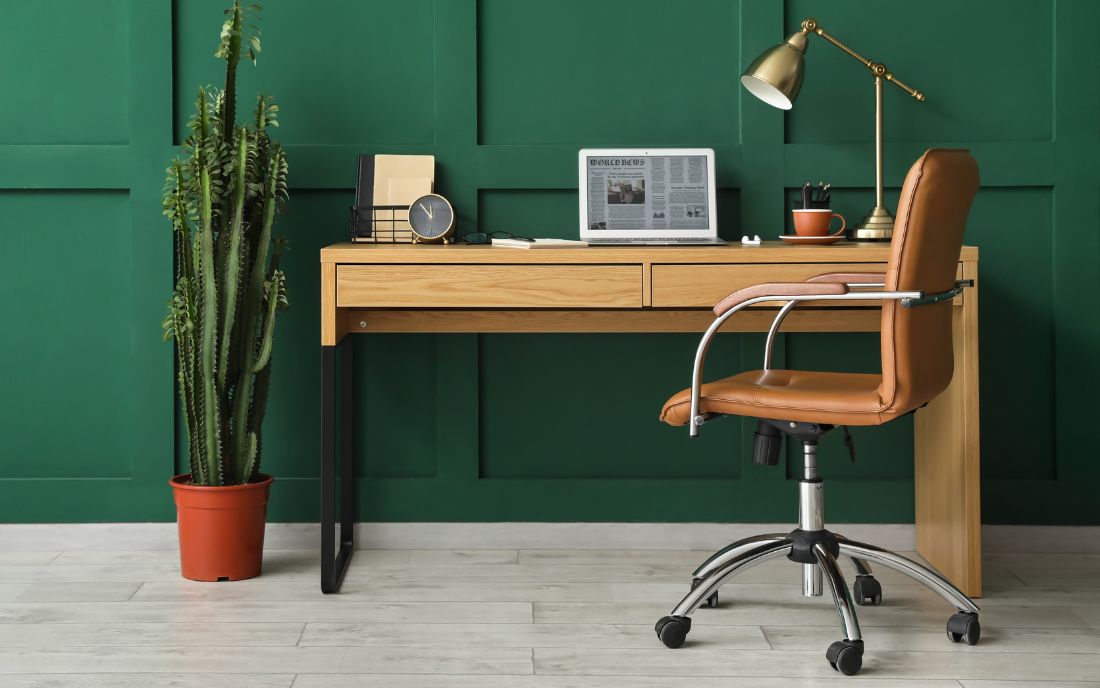
Bold colors infuse your home with energy and personality. Thoughtful planning helps you design a cohesive space brimming with creativity. Refresh any room with these three tips for incorporating bold hues into your home design.
Balance With the 60/30/10 Color Rule
Featuring bold colors too heavily in a room can make it feel overwhelming. Bold colors shine best when surrounded by more neutral shades.
The 60/30/10 color rule is one guideline that can help you simplify selecting and combining colors. Here’s how you can divide the color palette in each room:
- 60 percent dominant color
- 30 percent secondary color
- 10 percent accent color
Note that this rule doesn’t state you should only choose three colors for the room. Instead, each “color” can be an array of hues based on the same color. For example, you may choose a few shades of cool blue to use as the secondary color.
Dominant
The dominant color covers about 60 percent of the room’s surface and serves as a background or base color. You’ll typically find this color on the walls, large furniture pieces, rugs, and other major surfaces. People often use neutral colors like white, beige, gray, and soft pastels as the dominant color.
Secondary
The secondary color constitutes about 30 percent of the room and adds depth. It complements the dominant color while introducing variety and contrast. Use this color on curtains, side chairs, and smaller foundation pieces.
Accent
Finally, 10 percent of the room should feature the accent color. It adds a finishing touch and personality to the space.
This color should be a bold and eye-catching hue that stands out. Feature the accent color on throw pillows, fabrics, decorative accessories, and artwork.
Experiment With Textures
Another tip for incorporating bold hues into your home design is to experiment with textures. Varying textures add visual depth, appeal to the sense of touch, and make a room more interesting.
Avoid creating colorful but flat spaces. Here are some options for adding texture to rooms:
- Trim (baseboards, coffered ceilings, crown molding, chair rails)
- Textured paint
- Rugs
- Accent tiles
- Blankets and throws
Strategize Lighting
Finally, lighting significantly affects how bold colors look in your home. Consider your lighting fixtures’ color temperatures to ensure they complement your design.
Lightbulbs that emit warm, natural lighting will intensify warm colors such as yellow, orange, and red, but they will dull cooler colors, like green, blue, and gray. Cooler lightbulb hues pair better with green, blue, and gray.
Tip: Look at the Bulb’s Color Rendering Index
If you plan to replace your lightbulbs, look at the bulbs’ Color Rendering Index (CRI). You can find this number in the product box or online.
The CRI is on a scale of 1 to 100. Bulbs with a CRI of at least 90 will help bold colors look vibrant rather than washed out.
Make your design dreams come true when you work with Home Source Furniture in Houston, Texas. Our high-end living room furniture anchors bold rooms with quality and style—visit our showroom today.
